Great idea! If I ever come across an old veteran soldier, I'll definitely ask them if they have a Saba.dl2jas postete
I have an idea how to buy an old TV set SABA in the USA.
There where many soldiers from the US in Germany, especially in Berlin (West). They had an own TV station, AFN. The transmission was NTSC, not PAL. In the later 80s I lived nearby AFN Berlin Dahlem.
Some soldiers bought TV sets SABA with decoder NTSC and PAL. They wanted to look AFN and the German TV stations in Berlin, PAL. Ask old soldiers if they have an old and maybe broken SABA on the attic, in the cellar or wherever.
When I was young I tried to receive AFN with an old TV set, decoder PAL only. The problem was the synchronization of the picture frequency. PAL uses 50 Hz and NTSC 60 Hz. I modified the oscillator for vertical frequency to 55 Hz. After that the TV set received PAL in color and NTSC in black and white, both with standing picture.
Andreas, DL2JAS
Saba Ultracolor Telecommander
-
-
-
You can buy an old video recorder PAL from Germany.
They normally have a modulator UHF, very old recorders have a modulator VHF. There are a few video recorders with norms NTSC, PAL and SECAM, e.g. Sanyo.
Some recorders can convert RGB to PAL and vice versa. If you have one with NTSC --> RGB and one with RGB --> PAL (with modulator HF), the problem is solved except picture frequency. Modify the oscillator of the TV from 50 to 60 Hz.
By the way, here are many catalogues SABA:
http://www.saba.pytalhost.com/
Andreas, DL2JASWas bedeutet DL2JAS? Amateurfunk, www.dl2jas.com -
This is very hard for me to understand.dl2jas postete
You can buy an old video recorder PAL from Germany.
They normally have a modulator UHF, very old recorders have a modulator VHF. There are a few video recorders with norms NTSC, PAL and SECAM, e.g. Sanyo.
Some recorders can convert RGB to PAL and vice versa. If you have one with NTSC --> RGB and one with RGB --> PAL (with modulator HF), the problem is solved except picture frequency. Modify the oscillator of the TV from 50 to 60 Hz.
By the way, here are many catalogues SABA:
http://www.saba.pytalhost.com/
Andreas, DL2JAS
I know nothing about TV's.
Exactly, why do I need a video recorder? -
Hard problem...
You need some skills like technicians have.
I do not know a simple solution for NTSC -->PAL like plug & play.
Or is my English to bad?
You do not really need a video recorder.
It can be a simple and cheap solution for your problems. Sometimes you can buy broken video recorders for 1 $ or 1 Euro with mechanical defects. You only need the electronic, not the deck with the tape to convert the signals.
Andreas, DL2JASWas bedeutet DL2JAS? Amateurfunk, www.dl2jas.com -
Your english is fine, it's just I no nothing about the techinical aspects of TV's.dl2jas postete
You need some skills like technicians have.
I do not know a simple solution for NTSC -->PAL like plug & play.
Or is my English to bad?
You do not really need a video recorder.
It can be a simple and cheap solution for your problems. Sometimes you can buy broken video recorders for 1 $ or 1 Euro with mechanical defects. You only need the electronic, not the deck with the tape to convert the signals.
So to clarify your post, it's not absolutely necessary for me to buy a video recorder, right? -
-
-
Moin!
To get a german TV working in the USA, you have a couple of problems.
- Our german power line has 230 Volts and 50 cycles, you have 115 Volts and 60 cycles.
Luckily, the power supply doesn't care about the 60 Cycles, so you:
--can use a transformer
--modify the power supply with a voltage doubler
--many american homes have a >Anschluß< with 230 Volts for washing machines etc.
--install the power supply from the american version
- In Germany we have 50 pictures per second with 625 lines, in the USA 60 with fourhundredsomewhat lines.
It might work, but I think a few capacitors have to be changed.
Or install the line and frame module from the US version.
- In Germany we have the PAL color system, you have NTSC.
Modification of the color decoder will be very difficult, it might be easyer to adapt one from an american TV.
Or install the color module ...
- In Germany our >Tonträgerabstand< is 5,5 megacycles, in the US i think 4,5.
So the picture and sound IF modules must be modified, or the american version of the sound and picture IF modules...
This is necessary if you want to receive the program via antenna.
If you use a satellite receiver or something like that, you need a german video modulator.
I think you'll need at least the Service Manuals from the German and the U.S. version and someone who knows what he is doing.
Gruß Gerrit -
-
Der hat es sich vermutlich zu einfach vorgestellt...
Andreas, DL2JASWas bedeutet DL2JAS? Amateurfunk, www.dl2jas.com -
Thank you, Yehti for your helpful reply.
I'm still debating whether or not I'm going to buy a Saba.
I've found a Saba owner in Italy who's willing to ship me his Saba.
The problem is shipping will cost me around $400.
So, I'm still debating whether or not I'm going to spend $400 on the Saba.
It's a risky move. What do you think? -
Hi KGen1! (What´s your 1st name b.t.w.?)
If you intend to buy a 70ies TV and really want to use it for watching Television, the first thing to care about is the condition of it´s picture tube! If the CRT is faulty or worn you won´t have too much fun with it since a replacement is even more difficult to find.
So you will have to narrow your search to sets that are still in use or at least usable so the seller can tell you if the piture is still crisp and if all the colours are still being displayed correctly.
In the case of SABA TVs this is even more important because the CRTs used by SABA in the 70ies were of a poor quality. You have to rule out sets that stood in the homes of heavy-users!
So - your search is probably going to take maybe 6 - 12 months or longer until you have found a TV on Ebay Germany that the seller is willing to ship overseas.
But it might be worth the effort, if the TV and it´s CRT(!) are in good shape.
After that, you will have to find a TV-repair shop or an old technician in your neighbourhood who still can do the old magic of converting it to the US standards. Alternatively you could have a technician here in Europe do the work before shipping.
The following tasks have to be done (Gerrit already pointed out some of them above):
1. Realign the Filters / replace the ceramic-filters in the sound-IF section so it´s working on 4.5 instead of 5.5 MHz
2. Change the time constant of the vertical deflection´s oscillator to make it oscillate at 60 Hz.
3. Realign the bias of the cushion-compensation (PIN) if the set´s screen is >=51 cm in diameter.
4. Put a 3,58 MHz trap in the luminance signal path to prevent the colour-carrier from being displayed as luminance information.
In some cases an additional filter is needed to prevent sound IF (4,5 MHz) from entering the colour demodulator´s input where it would produce a coloured moiree-pattern. Usually there´s already a 4,5 MHz filter on the colour-demodulator unit but sometimes it´s not sufficient so a second one has to be placed in the picture-IF amp.
(If you would want to do a perfect job there were corrections to be made to some more filters in the picture-IF section as traps for neighbour-channel frequencies. But this usually leads too far...
5. Fit in either an NTSC- Decoder or a PAL-NTSC transcoder (not as good) for NTSC colour. The decoder also provides the hue-control.
All of these measures must be taken if you want the most perfect picture possible.
Especially a built in NTSC Colour-d e c o d e r produces a superb picture quality since it supplies the red, green, and blue signals that can be fed directly into the 3 coulour output stages in the set.
Everything else leads to inferior picture-quality. Especially converters that work outside the set will NOT do the job right. They incur a lot of losses to the signal´s quality.
As always - if you want a good picture quality you got to avoid solutions that demodulate a signal, modulate it again just to be demodulated once more. Every conversion takes it´s toll.
If you have acquired a set and have the circuit diagram you can post it here and I can show you where everything must be connected.
We had the US headquarters here in Frankfurt back in the days and the repair-shop where I worked was nearby the "IG-Farben" facilities. We had soldiers coming to the shop with their US TVs bought in the US or at PX Germany who wanted to watch German TV, others who had bought German TV sets here who wanted to take them back home, when they got relocated and we had even more German customers who wanted to watch AFRTS on their German sets.
So I converted several hundreds of TVs during those years.
There´s also a German company here in Frankfurt called "EGIS" (= "Equipment Gesellschaft für internationale Elektronik Systeme" - I think they might even still exist) who specialized in NTSC Decoders for many different TV brands and models.
http://www.egis.org/index2.html
They seem to have turned their focus to satellite-positioning systems but I´m sure Mr. Meixner (a highly qualified engineer) could still help supply some of the old decoders. He made his accounting using a Mac computer in the mid seventies, what made quite an impression on me then!Achim -
Hello @ all,
I am not an specialist, but perhaps this decoder can be a simply solution:
http://www.amazon.de/PAL-NTSC-Konverter-bidirektionaler-Converter/dp/B004B6619I/ref=sr_1_1?ie=UTF8&qid=1306832602&sr=8-1
Best regards
André
@Achim: Oder stelle ich mir das ganze Thema zu einfach vor? -
Not quite sure if this box can do all the tricks. The picture´s / coulour´s quality however ist questionable.
If the conversion is done right, the quality on NTSC is at least as good as on PAL!
I´m going to schow some hardware now that was used back in the heydays of conversion:
First here´s a sound IF unit for 4.5 and 5.5 MHz. You can see a little oscillator running @ 1 MHz to get the right frequency by mixing.
This device can be used universally and replaces the ceramic filter in the set:
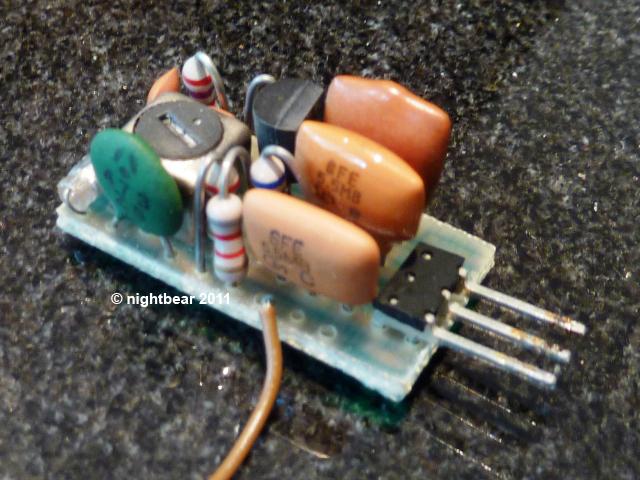
GRUNDIG made some sound IF cards that could be swapped for the built in cards for reception of both 4.5 and 5.5 sound - as you can see they used two seperate sound IF amplifiers. This is the point of bliss as far as dual sound quality is concerned!
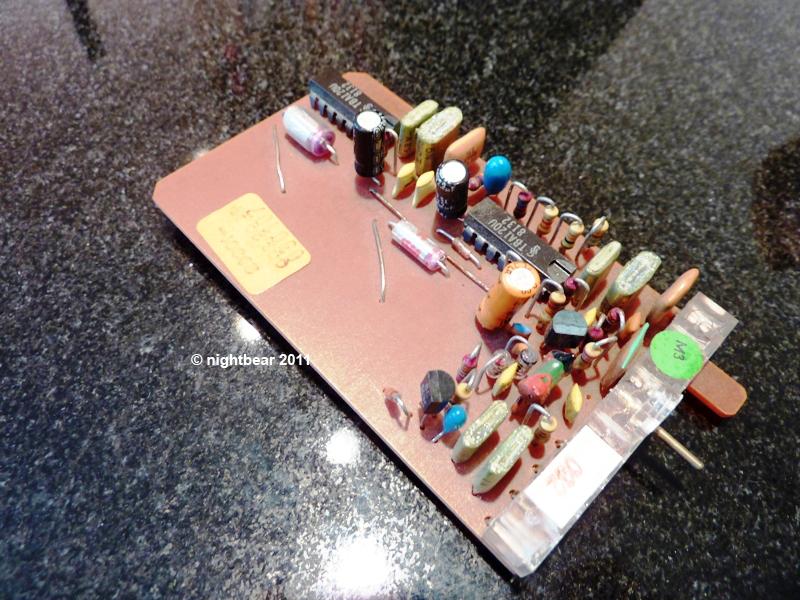
Next you see an EGIS NTSC decoder card. It could be used with a custom-made socket to fit any TV chassis or model:
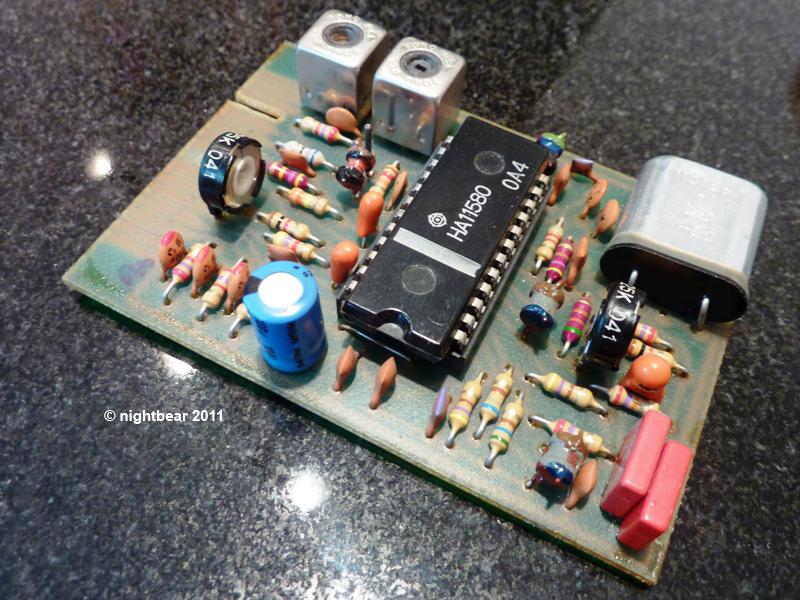
and here´s a complete unit - I´m not sure for which model though...
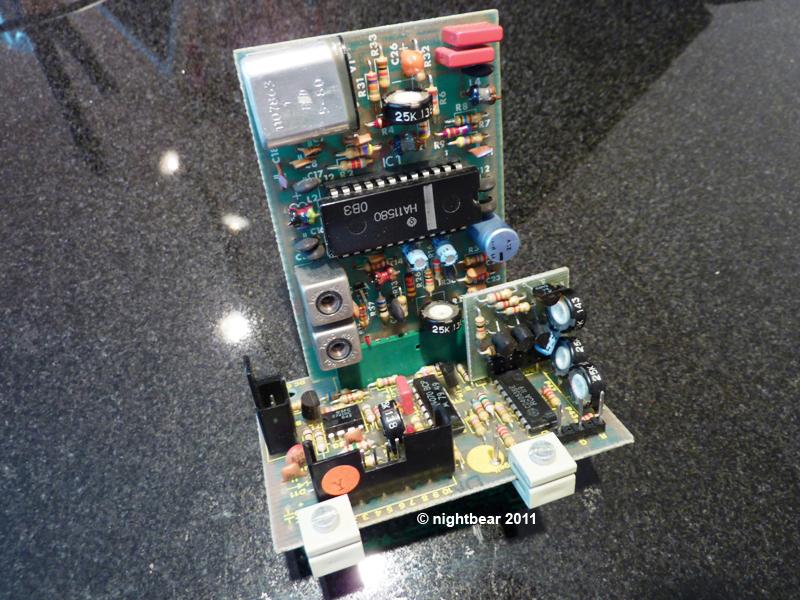
NTSC decoders are my favourite solutions to enable multi-standard colour as you now know. But, they are not always an option.
Next is an NTSC-transcoder. A little bit easier to fit in and for some TV models the only way for NTSC reception. They only provide a decreased colour quality - I used those when I was in a hurry or if the customer didn´t care about quality:
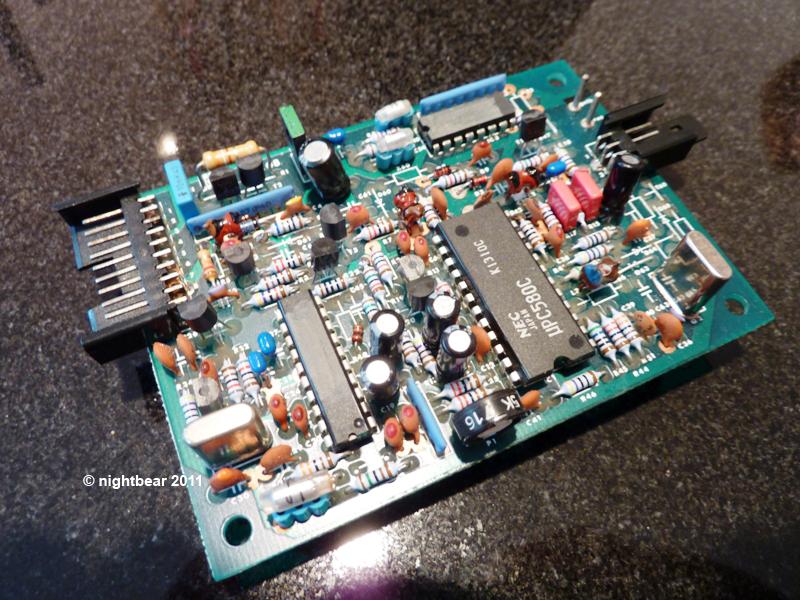
here´s a cheap transcoder made by Sectronic:
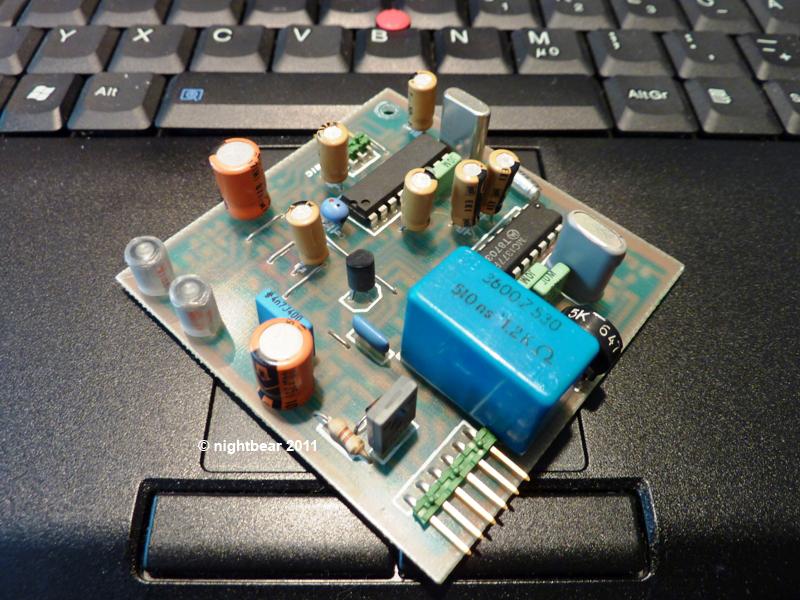
When you use transcoders there´s going to be a runtime lag between luminance and chrominance, so an additional delay line for luminance is needed!
Here it is:
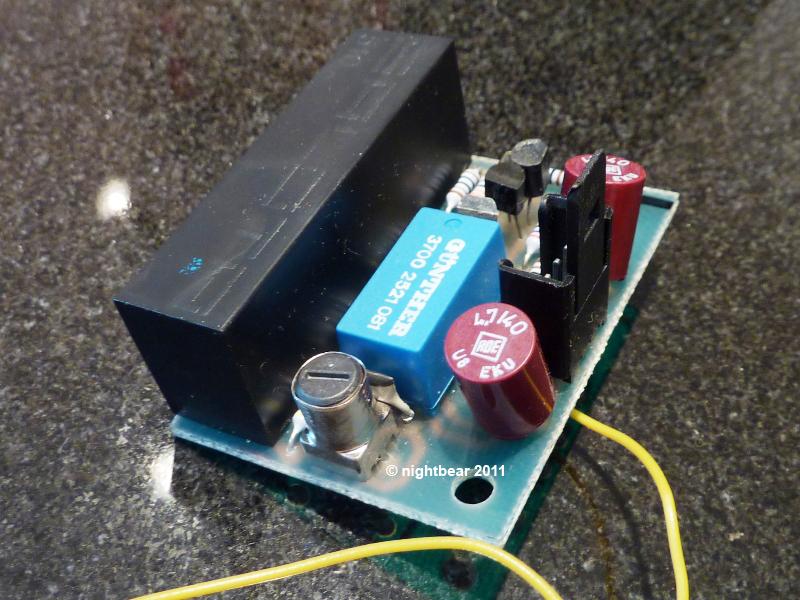
Finally a picture of some colour-carrier-traps:
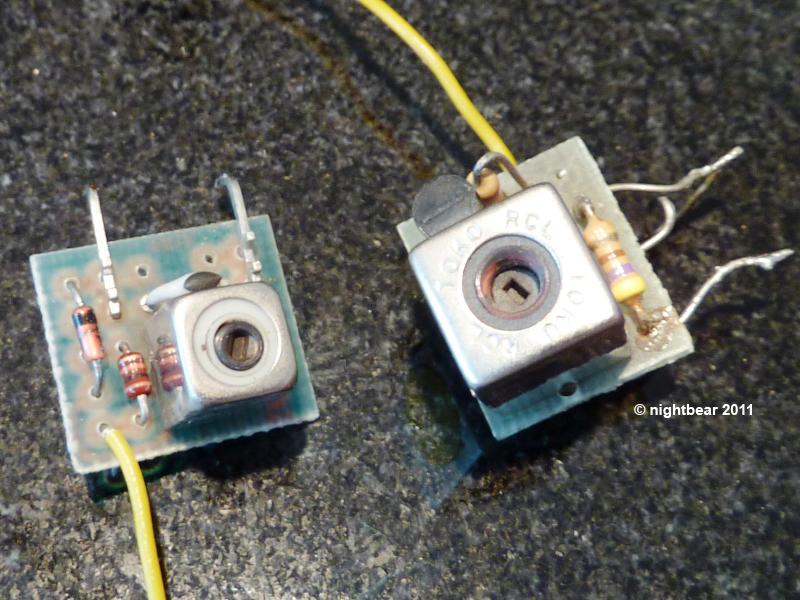
Just for the record: When everything is done right the picture quality of the NTSC picture is at least (!) as good as PAL. Sometimes it was even a little better. Remember NTSC has full colour resolution, the information is different in every single line while PAL uses two lines as one sharing the same information. There are some more ponits that could be mentioned here...
________________________________________
Viele der Vorzüge und Mängel, speziell des PAL Verfahrens, werden in diesem wirklich interessanten Thread herausgearbeitet:
http://www.wumpus-gollum-forum.de/forum/board/fernsehen-oldtimer-fernsehen-video-technik-farbfernsehgeraete-der-wirklich-allerersten-generation-14_71_1.htmlAchim -
Thank you everybody for your contribution to this thread. Much appreciated!
As already stated, I've found a Saba. I don't need to search for one anymore.
I've found a TV engineer/collector in Italy who is willing to ship me his Saba TV for free. He has promised me to repair the Saba to the best condition before shipping it to me. Needless to say, he knows how to properly handle the Saba and perfectly package it in a box and ship it safely.
As stated, he is a TV technician/engineer and he is aware of the issues Saba's face in order to work in the United States. He has given me all the steps + list of items necessary to purchase in order to make the Saba function correctly.
At the moment, he is waiting on me. I've told him to hold on to the Saba for a little longer because I'm not quite ready to spend $400 on shipping + all the items needed to make it work in the USA.
Do any of you personally know someone who has successfully managed to make a European TV work in the United States?
